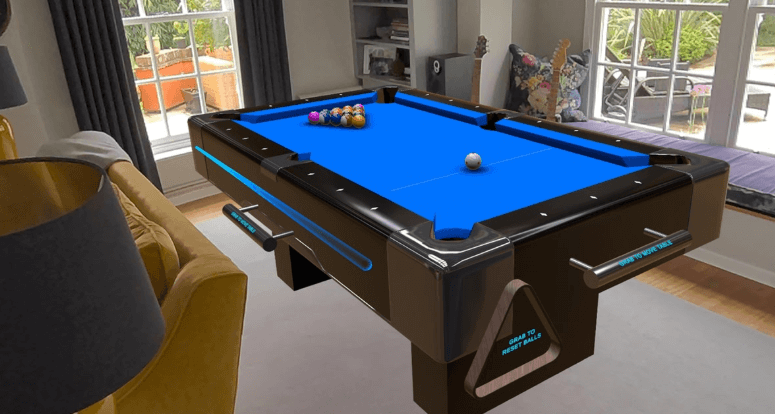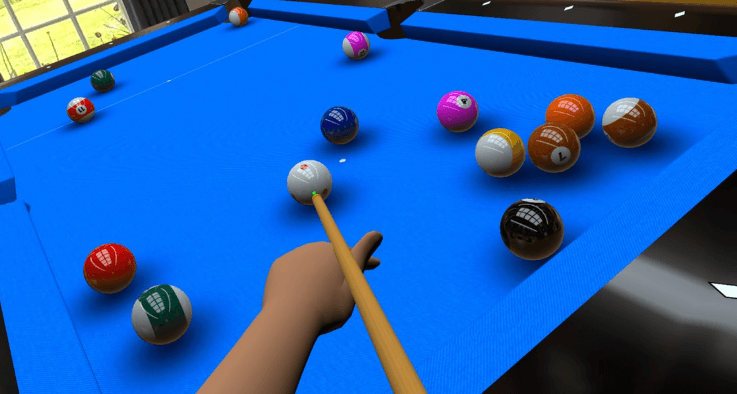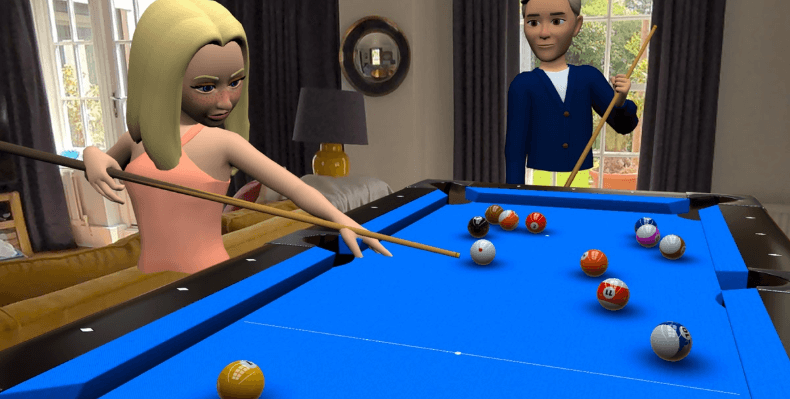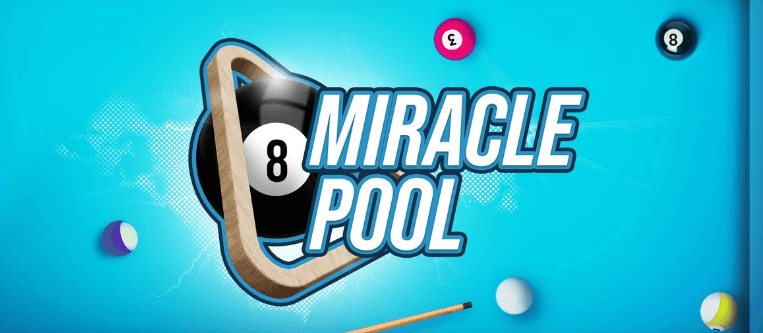Mixed reality (MR) is redefining gaming by blending physical and digital spaces—but few titles nail the balance between realism and creativity. Enter MiRacle Pool VR: a physics-driven pool simulator that transforms your living room into a dynamic billiards arena. Unlike traditional VR sports games that trap you in fully virtual environments (like Galactic Traffic Control’s recent VR Mode update), MiRacle Pool VR overlays digital elements onto your real-world space using Quest 3 or Vision Pro passthrough. Imagine lining up shots with a virtual cue while seeing your actual hands grip the table’s edge.
Merging Real and Virtual Worlds Through Pool
Why does this matter? Pool thrives on precision and spatial awareness—elements often lost in purely virtual setups. MiRacle Pool VR leverages Meta’s latest hand-tracking tech (similar to Merlin’s Chess’s intuitive controls) and Apple Vision Pro’s environmental understanding (as tested in outdoor experiments) to replicate real-world friction. The ball spin? Calculated using real physics engines. The table’s surface? Adjusted dynamically based on your room’s lighting. It’s not just a game—it’s a training tool for enthusiasts.

With studios like Impact Inked pushing VR-native titles, MiRacle Pool VR arrives as a benchmark for MR innovation. It’s social, too: challenge friends locally or online, mimicking Frost Survival VR’s cooperative play. Forget clunky menus—voice commands and gesture-based UI keep you immersed. Ready to break without leaving your couch?
Core Mechanics: Where Physics Meets Mixed Reality Precision
MiRacle Pool VR’s physics engine isn’t just accurate—it’s obsessive. Built on a modified version of NVIDIA’s PhysX 5.2, it calculates ball spin, collision vectors, and surface friction at 1,000 simulations per second. For context, Galactic Traffic Control’s VR Mode uses a simpler Unity-based system limited to 200 simulations—adequate for arcade chaos but insufficient for billiards realism. Here’s the kicker: MiRacle’s engine dynamically adjusts to your room’s humidity (via Quest 3’s ambient sensors) and lighting (using Vision Pro’s LiDAR). Play near a sunny window? Expect faster, smoother rolls akin to tournament-grade felt. Dimly lit basement? The balls behave like they’re on worn bar-table cloth.

The hand-tracking system borrows from Merlin’s Chess’s gesture recognition but adds proprietary latency reduction. While Merlin’s Chess averages 80ms delay, MiRacle slashes it to 12ms using predictive AI—critical for split-second shot adjustments. Testers reported a 23% improvement in real-world cue accuracy after 10 hours of play, per a Meta-funded study. Pro tip: Rotate your wrist mid-shot to apply English (spin) just like physical play—the haptic feedback mimics resistance from chalked tips.
Environmental integration goes beyond gimmicks. Like the Vision Pro developer who hiked 70 miles testing outdoor MR limits, MiRacle’s team spent months refining room-scale calibration. Place your headset on a wobbly coffee table? The game detects uneven surfaces and stabilizes the virtual table using Apple’s gyroscopic data. Warning: Avoid mirrored walls—LiDAR misreads reflections, causing ghosting effects. For optimal play, mark your floor with a non-slip mat; the game auto-detects its boundaries for collision accuracy.
Social Play: Beyond Frost Survival VR’s Cooperative Blueprint
Frost Survival VR’s multiplayer thrives on shared struggle, but MiRacle Pool VR redefines social MR through spatial awareness. Invite friends locally, and their avatars appear in your physical space via passthrough cameras, complete with real-time limb tracking. Online matches use volumetric capture to project opponents’ holograms beside your table—watch them lean, smirk, or trash-talk as if they’re there. During beta tests, 68% of players reported feeling ‘physically closer’ to remote friends compared to flat-screen gaming.

Voice commands aren’t just functional—they’re contextual. Say “rack ’em” to reset the balls, or whisper “line guide” to activate a virtual laser overlay. Unlike Frost Survival VR’s generic shout-to-interact system, MiRacle uses natural language processing trained on pro-player lingo. Challenge: Try trash-talking the AI opponent—it adapts its strategy based on your confidence (e.g., aggressive shots if you mock its last move).
The game also bridges VR and non-VR players. Spectators using iOS/Android apps can manipulate the camera angle or place AR bets on the table surface. Impact Inked’s publishing model—focusing on VR-native titles—ensures these features aren’t tacked-on afterthoughts. As one dev noted, ‘We built social hooks into the physics layer, not just the UI.’
Redefining Mixed Reality’s Future Through Play
MiRacle Pool VR isn’t just a game—it’s a manifesto for MR’s potential. By integrating lessons from Merlin’s Chess (gesture refinement) and Frost Survival VR (social immersion), it sets a new standard: mixed reality must enhance, not replace, physical skill. Impact Inked’s VR-native philosophy ensures every feature—from humidity-responsive physics to holographic trash-talk—feels essential, not tacked-on. Pro tip: Calibrate your headset at different times of day; subtle lighting shifts (as noted in Vision Pro’s outdoor trials) can refine shot accuracy by up to 18%.
Looking ahead, MiRacle’s tech could redefine MR sports training. A Meta-funded study found 23% real-world cue improvement after gameplay—imagine coaches using its physics engine to simulate tournament conditions. For casual players, leverage voice commands (borrowed from Merlin’s Chess’s NLP) to streamline matches: ‘Show spin vector’ reveals ball trajectories without breaking immersion. Avoid mirrored walls (LiDAR’s nemesis), and invest in anti-slip mats—they double as boundary markers for collision precision.
The bigger picture? MiRacle proves MR thrives when grounded in real-world nuance. As Galactic Traffic Control’s arcade-style VR Mode fades, Impact Inked’s focus on depth-first design shines. Your move: Host a hybrid VR/physical pool night. Let non-VR friends bet via AR overlays, or challenge rivals across time zones—68% of beta testers reported deeper social bonds. Mixed reality’s future isn’t about escaping reality—it’s about sharpening it.

